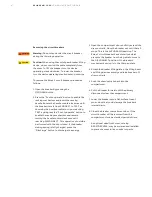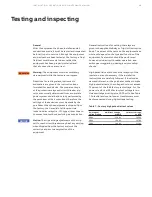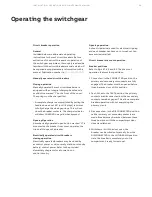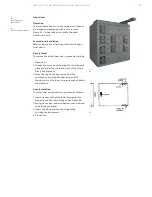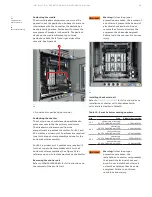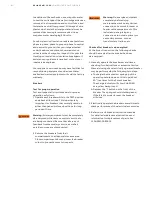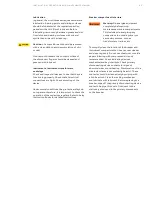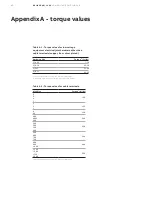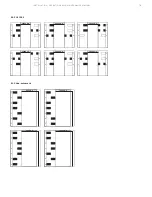
61
R E LI AG E A R® LV SG
LO W VO LTAG E S W I TC H G E A R
Warning:
De-energize equipment
completely before doing
maintenance work on any devices,
connections, bus work, breaker or
feeder cable compartments. This
includes de-energizing any
connections to outside primary or
secondary sources, such as
transformers, tie lines, etc.
Checks after breaker is de-energized
At the time of inspection, the following checks
should be made after the breaker has been
de-energized.
1. Manually operate the breaker several times,
checking for obstructions or excessive friction.
Manual closing of an electrically operated breaker
may be performed by the following two steps:
a. To charge the mechanism springs, pull the
operating handle down until it stops (about
90°) ten times for the Emax 2 breaker.
The charge indicator will show CHARGED
on a yellow background.
b. Depress the "I" button on the front of the
breaker. The springs should discharge and,
if the latch is properly reset, the breaker
will close.
2. Electrically operate the breaker several times to
check performance of the electrical accessories.
3. Refer to circuit breaker instruction manuals
for detailed maintenance instructions and
information for replacement of parts. See
1SDH001000R0002.
Breakers
Test for proper operation
Test and inspect all circuit breakers for proper
operation as follows:
1. Operate each breaker while in the TEST position
and check all functions. This is particularly
important for breakers that normally remain in
either the opened or closed positions for long
periods of time.
Warning:
Primary equipment must be completely
de-energized while tests on control circuits, etc.
are being conducted. Be sure that all areas of
feedback from secondary circuits, as well as
outside sources, are disconnected.
2. Remove the breakers from their
compartments to a clean maintenance area.
Close compartment door and cover the breaker
cutout to prevent access to live parts.
In addition to these checks, use a megohm-meter
to test the switchgear. Open all switchgear devices,
remove all instrumentation and control fuses, and
isolate the neutral from ground. All scraps of wire,
plaster, dust, and other foreign material must be
removed. Vacuuming is recommended. Use a
megohm-meter developing 500 volts.
Conduct electrical insulation resistance tests from
phase to phase, phase to ground, phase to neutral,
and neutral to ground. If any switchgear tested
under the above conditions shows resistance
values less than 1 megohm, inspect it for possible
tracking on insulation or insulation breakdown. If
assistance or guidance is required, contact your
local service engineer.
Your supplier's service shop may have facilities for
reconditioning equipment and devices. Water
soaked and wetted equipment will void the factory
warranty.
DANGER
WARNING
CAUTION
NOTICE
DANGER
WARNING
CAUTION
NOTICE

